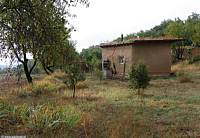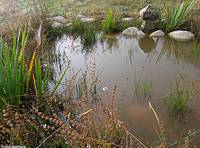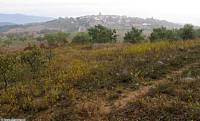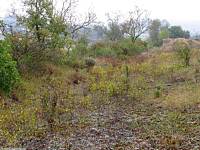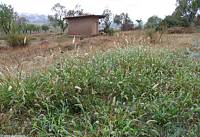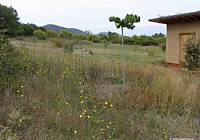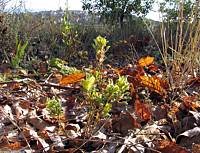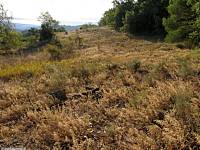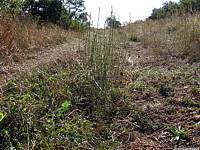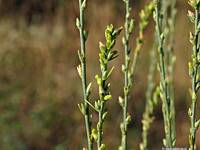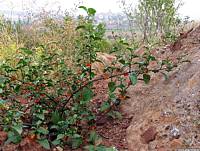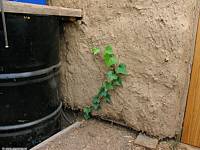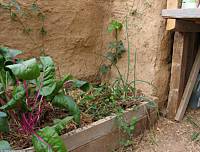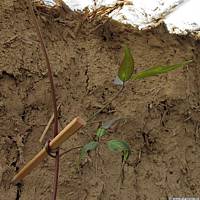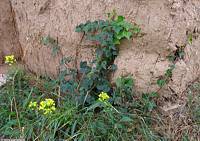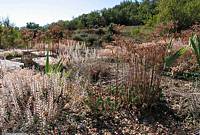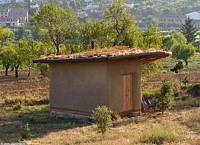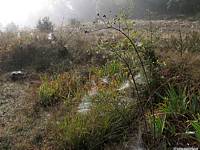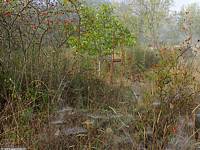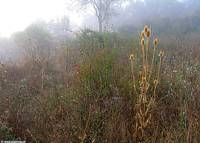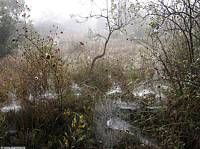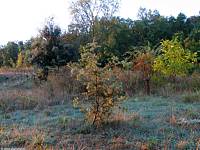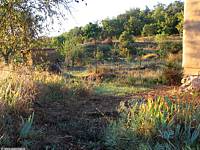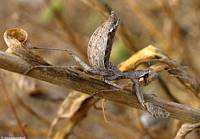|
|
Nature
Switched On
|
|
|
introduction
|
2010 September 17 to 24 On the 17th of September there was
another cloudburst which produced 33
liters per square meter in less than an hour. This was sufficient to
fill the two ponds and this time also the water deposit of 2000
litres. Thi
The semi-parasite Odontites luteus has
started to flower massively in many parts of the zone.
I had a hard time mowing some areas full of these yellow beauties but spared an area in front of the house. |
|
|
|
Odontites luteus is here
probably parasiting on Thymus vulgaris. Higher terrace, looking north-east. 23 Sep 8:57 |
|
|
Picris hieracioides around a Mulberry tree, with the
mown area at the back. |
Setaria pumila is here
taking advantage of the higher humidity, caused by the adjacent car
park with the compacted, less permeable soil. 18 Sep 8:53 |
|
|
Three new species were detected and identified. Ononis stria
Really new is Thymelaea passerina, an annual member of a peculiar family of mostly shrubs. It is probably introduced in the zone thanks to the bulldozer which excavated the trench last year.
But for the orange berries, Solanum villosum is almost
indistinguishable from Solanum nigra. It grows, together with
its twin sister, on the artificial hill with the solar panels.
|
||
|
|
Ononis striata grows
quite abundantly in the half shade of the middle terrace. 22 Sep 9:36 |
|
| Ononis
natrix, withered but still atractive on the higher terrace. The yellow patches are from Odontites luteus. 17 Sep 8:47 |
||
| Simple,
grass-like flowers of Thymelaea passerina. 22 Sep 9:28 |
Four plants of Thymelaea
passerina were detected along the track. Middle terrace, looking south-east. 22 Sep 10:08 |
|
|
About ten plants of Solanum
villosum on this hill. 23 Sep 9:15 |
||
|
The vegetation on the walls of the different buildings is doing
fine. The vines suffered somewhat from the summer drought but are
recovering. It is still not certain if some climbing species like
Hedera helix (Ivy) and Hydrangea petiolaris will be able
to actually stick to the plaster.
Clematis montana (var. Rubens) doesn't have this problem as it uses the chop sticks fixed into the wall to wind its petioles around. |
||
| This Ivy
is the same plant as the one in the picture below, but I guided it
inside the greenhouse. 23 Sep 9:36 |
This Ivy was planted in the
greenhouse to cover the inside walls. Jasmine and chard on the left. 23 Sep 9:35 |
|
| This Ivy
is growing well but still doesn't show its sticking abilities. With some Barbarea vulgaris flowers. 23 Sep 9:33 |
This Clematis
montana has reached already the transparent fibre roof of the
greenhouse. |
|
|
The vegetation on the roof of the house has survived the summer and
numerous seedlings can be found, many of them I suppose are from the
|
||
|
The stalks of the Sedum vegetation stay erect and gracious. A grass vegetation would be much more flattened and shapeless by now. 17 Sep 8:55 |
The sun produces a nice effect on
the transparent fruit remains of Alyssum alyssoides. Looking south. 9 Sep 11:05 |
|
|
Late summer is one of the most photogenic periods of the year, with mist and humidity setting in but with still many surviving colours and structures.
|
||
| 19 Sep 10:03 | 19 Sep 9:56 | |
| 19 Sep 9:39 | 19 Sep 10:01 | |
| 24 Sep 8:04 | 24 Sep 8:19 | |
|
Thumbs up, seems to be the prayer of this mantis. |
||
|
Praying mantis. 19 Sep 9:46 |
||
|
introduction
|
|
